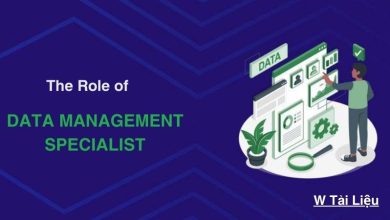Differences administering Jira Data Center and Cloud
This page outlines the differences you can expect as a Jira Data Center or Server administrator when moving to Jira Cloud. Some of the capabilities listed below apply to more than one product.
If you want to explore how Cloud is different for your users, check out the Cloud adoption toolkit.
Administrator roles
Administrator global permissions
Works differently in Cloud.
What’s different
In Jira Data Center and Server, there were two levels of global administrator permissions, Jira administrator, and System administrator. In Cloud, you assign roles to people. Roles include User, Product admin (which is equivalent to Jira administrator global permission), and Organization admin, which is similar to System administrator global permission, but has rights to manage user directories, security settings, billing details, and other configurations for all the products in your organization, not just Jira.
How it works in Cloud
Give users admin permissions
Who it affects
Organization admin, Product admin Jira Software, Jira Service Management
Apps and integrations
Listeners
Works differently in Cloud.
What’s different
You can’t configure listener interfaces in Cloud. In Jira Data Center and Server, listeners were used when you wanted to trigger an action in an external system based on an event that happened in Jira. Webhooks provide a better way to do this in Jira Cloud products (and more recent versions of Jira Data Center).
How it works in Cloud
Webhooks
Who it affects
Organization admin Jira Software, Jira Service Management
Insight asset management
Works differently in Cloud.
What’s different
Insight asset management is available in Jira Service Management Cloud on selected plans. There are some differences in how asset management works including object schema templates, integration with other third-party tools, some bulk actions, and the ability to extend automation with Groovy scripts.
How it works in Cloud
What’s in Assets for Cloud?
Who it affects
Product admin Jira Service Management
Install intermediate certificates
Not available in Cloud.
What’s different
It’s not possible to install intermediate certificates in Jira Cloud products as they can cause problems when you add secure POP/IMAP mail servers that have certificates signed by non-root CAs. If you need an intermediate certificate for an integration, you should obtain a certificate signed by a trusted root Certification Authority (CA).
How it works in Cloud
N/A
Who it affects
Organization admin Jira Software, Jira Service Management
Opsgenie incident management
Only available in Cloud.
What’s different
Opsgenie provides on-call and alert management and is included with your Jira Service Management Cloud subscription. Features available may depend on your plan.
How it works in Cloud
Get to know Opsgenie
Who it affects
Product admin Jira Service Management
Auditing and governance
Audit logs
Works differently in Cloud, and may require an additional subscription.
What’s different
An audit log is available with all paid Jira Software Cloud and Jira Service Management Cloud plans, and is similar to the audit log provided with Jira Server. However, the Cloud audit log doesn’t provide the ability to configure granular coverage areas and levels as in Jira Data Center. An additional audit log for user management and organization-level events is available with an Enterprise plan or Atlassian Access subscription.
How it works in Cloud
Audit activities in Jira applications
Track organization activities from the audit log
Who it affects
Organization admin Jira Software, Jira Service Management
Email and mail servers
Customize email templates
Not available in Cloud.
What’s different
You can’t modify email templates in Jira Software Cloud. In Jira Data Center and Server, this was only possible by modifying the underlying Velocity templates, which you don’t have access to in Cloud. Customer email customization is possible in Jira Service Management.
How it works in Cloud
N/A
Who it affects
Organization admin, Product admin Jira Software
Outgoing mail server
Works differently in Cloud.
What’s different
Your Cloud application includes an internal SMTP server configured to send notifications. There should be no need for you to administer the internal SMTP server manually. You can configure the sender email address for Jira projects, so emails are sent on behalf of your domain.
How it works in Cloud
N/A
Who it affects
Organization admin, Product admin Jira Software, Jira Service Management
Incoming mail server
Works differently in Cloud.
What’s different
You can configure POP/IMAP mail servers but not file system messages. An incoming mail server is used to create issues via email, and must be configured to standard ports POP: 110; SECURE_POP: 995; IMAP: 143; SECURE_IMAP: 993. You can also connect a Google, Microsoft or other custom email address to your service project and view email logs for each of these accounts.
How it works in Cloud
Create issues and comments from email
Who it affects
Organization admin Jira Software, Jira Service Management
General administration
Project and workflow administration
Archive individual issues
Not available in cloud.
What’s different
In Cloud, it’s not possible to archive individual issues. When you migrate your issues from Server or Data Center, any previously archived issues will be unarchived. It is possible to archive entire projects on selected Jira Cloud plans.
How it works in Cloud
Archive a project
Who it affects
Product admin Jira Software, Jira Service Management
Import issues
Works differently in Cloud.
What’s different
In Cloud, you can import data from a range of external applications using a CSV or JSON file, or import data directly from Bitbucket and Trello. This method is not used when migrating from Jira Server or Data Center to Cloud, as specific migration tools are available to help streamline this process.
How it works in Cloud
Import and export your data to and from Jira Cloud
Who it affects
Organization admin Jira Software, Jira Service Management
Import XML workflows from file
Not available in Cloud.
What’s different
While product admins can export a workflow to XML, you can only import workflows from the Marketplace, not directly from an XML file for security reasons. You can share your workflow with other users on Marketplace.
How it works in Cloud
Import and export issue workflows
Who it affects
Product admin Jira Software, Jira Service Management
Inject HTML and JavaScript into issue fields
Not available in Cloud.
What’s different
You can’t paste or otherwise inject HTML and JavaScript into issue fields. This is to limit the risk of cross-site scripting (XSS) attacks.
How it works in Cloud
N/A
Who it affects
Product admins, Users Jira Software, Jira Service Management
Text gadget
Not available in Cloud.
What’s different
The Text gadget is not available in Cloud. This is to limit the risk of cross-site scripting (XSS) attacks. The gadget was disabled by default in Jira Data Center and Server for the same reason.
How it works in Cloud
N/A
Who it affects
Product admins, Users Jira Software, Jira Service Management
Issue hierarchy model
Works differently in Cloud.
What’s different
Server or Data Center maintains two types of issue hierarchy:
-
Jira Software connects issues from the base level (containing stories, bugs, tasks) to epics. Thus a valid epic-link relationship is when the base/child issue is one level below the epic level.
-
Advanced Roadmaps installed in the Server or Data Center instance connects issues around in an extended hierarchy.
-
An epic link connects an issue from the base/child level (level 0) to an issue of the epic issue type fixed at level 1.
-
A parent link connects an issue to a parent on a level above it, provided the parent issue type is not a built-in epic issue type.
-
How it works in Cloud
In Cloud, the issue hierarchy is similar to the one in Advanced Roadmaps.
Learn more about issue hierarchy in Cloud
Learn about the two methods to maintain epic link information during migration.
Who it affects
Product admins Jira Software, Jira Service Management
Service project administration
Canned responses
Works differently in Cloud
What’s different
In Jira Service Management Cloud, a canned response can be either personal or shared. A personal canned response can’t be shared with other agents and will only be visible to the agent or admin who created it. Shared canned responses, on the other hand, are shared with all the agents in a service project. Currently, only project admins can create shared canned responses in Jira Service Management.
How it works in Cloud
Learn more about canned responses in Jira Service Management
Who it affects
Product admin Jira Service Management
Import SLA configuration from another project
Not available in Cloud.
What’s different
You can’t currently export the SLA configuration from one project and import it into another. This functionality was available in Jira Service Management Data Center and Server, but has not yet been developed for Cloud.
How it works in Cloud
N/A
Who it affects
Product admin Jira Service Management
Priority schemes
Not available in Cloud.
What’s different
In Jira Service Management Data Center and Server, you could configure priorities per project. This is not available in Cloud.
How it works in Cloud
N/A
Who it affects
Product admin Jira Service Management
Need help choosing?
Still deciding whether cloud or Data Center is right for your organization? Head to our comparison page to explore the benefits of each.
Learn more about the differences between Cloud and Data Center
Conclusion: So above is the Differences administering Jira Data Center and Cloud article. Hopefully with this article you can help you in life, always follow and read our good articles on the website: W Tài Liệu


